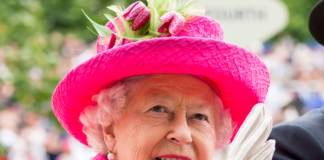
Halloween is a night reserved for dressing up, gathering goodies, bobbing for apples, and of course trick-or-treating. On the 31st of October children and sometimes adults, dress themselves in creative costumes to roam around in the streets for a few hours joining the festivities and an evening of ghoulish camaraderie.
Halloween is technically a celebration of the evening prior to All Saint’s Day and according to old European tradition, this is the night when the spirits are most likely to make contact with the living and magic is at its most powerful. The Pagan roots of this holiday have turned the tradition into a political and spiritual debate, with some devout Christian communities attempting to abolish the holiday as it comes from Pagan roots.
Pagan celebrations have noting to do with the devil or the worshipping of evil. It is a religion that follows the flow of nature’s rhythms and of course, is perhaps a bit mysterious to those who do not understand it. However, Paganism is far from dangerous and it is not at all associated with the religious practices of Satanism. Satanism worships the theories and practices of the Devil while Paganism relates to nature and the natural world rhythms. There seems to be quite a difference, despite the rhyming in the names.
Despite the resistance this long practiced holiday is receiving at home, abroad it is becoming rapidly adopted in many countries around the world, with their own cultural twists, of course. Ireland, Peru, The United Kingdom, and Canada are all joining in the celebrations. New Zealand and Australia are rapidly following suit.
In Ireland, adults and children alike dress themselves to represent the scary creatures they wish to avoid, as in ghosts and goblins and witches and monsters, and they herald in the end of summer with a great bonfire and despite the fact that firework are for the most part illegal, there is still a grand display.
Children in Ireland are given a week long holiday from school for Halloween, unlike the American children who go to school all week, including the day of. Apple bobbing, cakes with tokens baked inside, the carving of pumpkins and turnips with candles placed inside for decoration, and weeklong festivities are the backbone to Halloween traditions in Ireland.
Scottish children share most of the same Halloween customs as their Irish neighbors, although the Scottish children are attempting to scare away evil fairies with their costuming and turnip carving. One of the most popular games is the hanging of an apple on a string from the ceiling, and challenging children to eat it without the use of the hands.
Australia and New Zealand are slowly learning about the holiday. Originally thought to be “nonsensical Americanism,” the Irish settlers in Australia and New Zealand are slowly reaching the Australian communities and introducing them to the holiday’s meaning and traditions. Soma Australians greet the concept warmly while others still say it is American influence reaching across oceans through various media and influencing the children. Those youths who do go out in unorganized trick or treat rounds do so with the intention of egging houses that have nothing or to vandalize churches and schools. Apparently some information has trickled down, but not the valuable information.
The Caribbean as well is joining in the celebrations a little more, although Halloween is not widely celebrated on these islands. Each year the Caribbean Islands see about a three percent increase in Halloween participation.
Many other regions see Halloween as a part of North American pop culture despite the Irish roots of the holiday. Halloween is still a part of American culture, and dressing up to ward off the evil spirits that threaten us either in reality or in our own minds, is a reasonable and fun way to deal with the fears that are associated with uncontrollable evils of the world, which really, is the basis of Halloween.
Halloween customs, while slowly dying out in the United State, may very well experience another surge in popularity with the common education factor of multi media capabilities. Those who learn the honest roots of Halloween, the spirit of Paganism, and the meaning of Halloween, have a strong desire to celebrate it. As the internet feeds more information into more homes than ever, it is simply a matter of time before the value of self education in just about everything, becomes easier and more accurate.







































